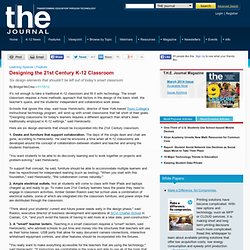

Let's Stop Talking about Teaching with Technology, and Start Talking about Teaching. Those that know me might be confused by this.

I’ve built my career around education technology. My job is to help teachers integrate technology into their classrooms. In my current job, and my previous role as an educator, I’ve learned about (and used) learning management systems, flipped classroom methods, e-portfolios, personal learning networks, collaboration tools, and behavior management software. I am constantly exploring digital tools and resources, creating tutorials and instructions, and delivering professional development to educators. I’ve spoken at conferences, worked with school districts, and collaborated with other technology integrators. I have learned a lot -and I still have a lot to learn- but the most important thing I have learned so far is this: Most teachers don’t care about technology. Here’s the more important thing I’ve learned: they shouldn’t. I wanted to teach. Here’s the thing: using technology does not necessarily make a teacher effective. Was I efficient?
21st Century learner. Learning Environments for the 21st Century. "Learning environments for the 21st century", chapter 2 in a new book on educational facilities released by the OECD gives you a few glimpses into the historical evolution of the classroom and looks at what education will need by way of learning space in the 21st century.

Although it's about physical space, author Christian Kühn makes some points that can help digital learning designers answer questions like: how do you design the ideal learning environment, when we don't really know what that is yet? The 3 most important things to learn in the 21st century... Kühn suggests that the 21st century calls for a different kind of education to the factory-based rows of repetition schooling popularized by industrialization. Education should prepare students for success in a much changed heterogenous, globalized society facing unprecedented economic and ecological crises.
Designing the 21st Century K-12 Classroom. Learning Spaces | Feature Designing the 21st Century K-12 Classroom Six design elements that shouldn't be left out of today's smart classroom By Bridget McCrea01/18/12 It's not enough to take a traditional K-12 classroom and fill it with technology.

The smart classroom requires a more methodic approach that factors in the design of the basic shell, the teacher's space, and the students' independent and collaborative work areas. Schools that ignore this step, said Issac Herskowitz, director of New York-based Touro College's instructional technology program, will wind up with smart classrooms that fall short of their goals.
Here are six design elements that should be incorporated into the 21st Century classroom. 1. "You want students to be able to do discovery learning and to work together on projects and problem-solving," said Herskowitz. 2. 3. "You really want to make everything accessible for the teachers that are using the technology," said Herskowitz. 4. 5.
Singapore's 21st-Century Teaching Strategies (Education Everywhere Series) Adrian: I think it is important to make school fun.

And when school is fun, you don't get kids waking up in the morning and saying, "Do I have to come to school again? " So we embrace technology, because it helps us make learning more engaging. I believe that when kids are engaged, when kids are interested, that's where learning takes place. Ho: The kids are really from a very different world now. And really to reach out to the kids, you need to be savvy with technology. Teacher: What you want to do right now is, okay, think of the Socratic questions. Adrian: Ngee Ann Secondary School is a typical school in Singapore where we take in students with different academic abilities, and we have about 1,512 students in this school. Lee: In the early 1990s, the teachers really are the monopoly on knowledge, and they are the one that comes to the class to deliver that knowledge so that the students can acquire them. Teacher: Velocity defines the rate of change of the sense of time.
Teacher: Okay.